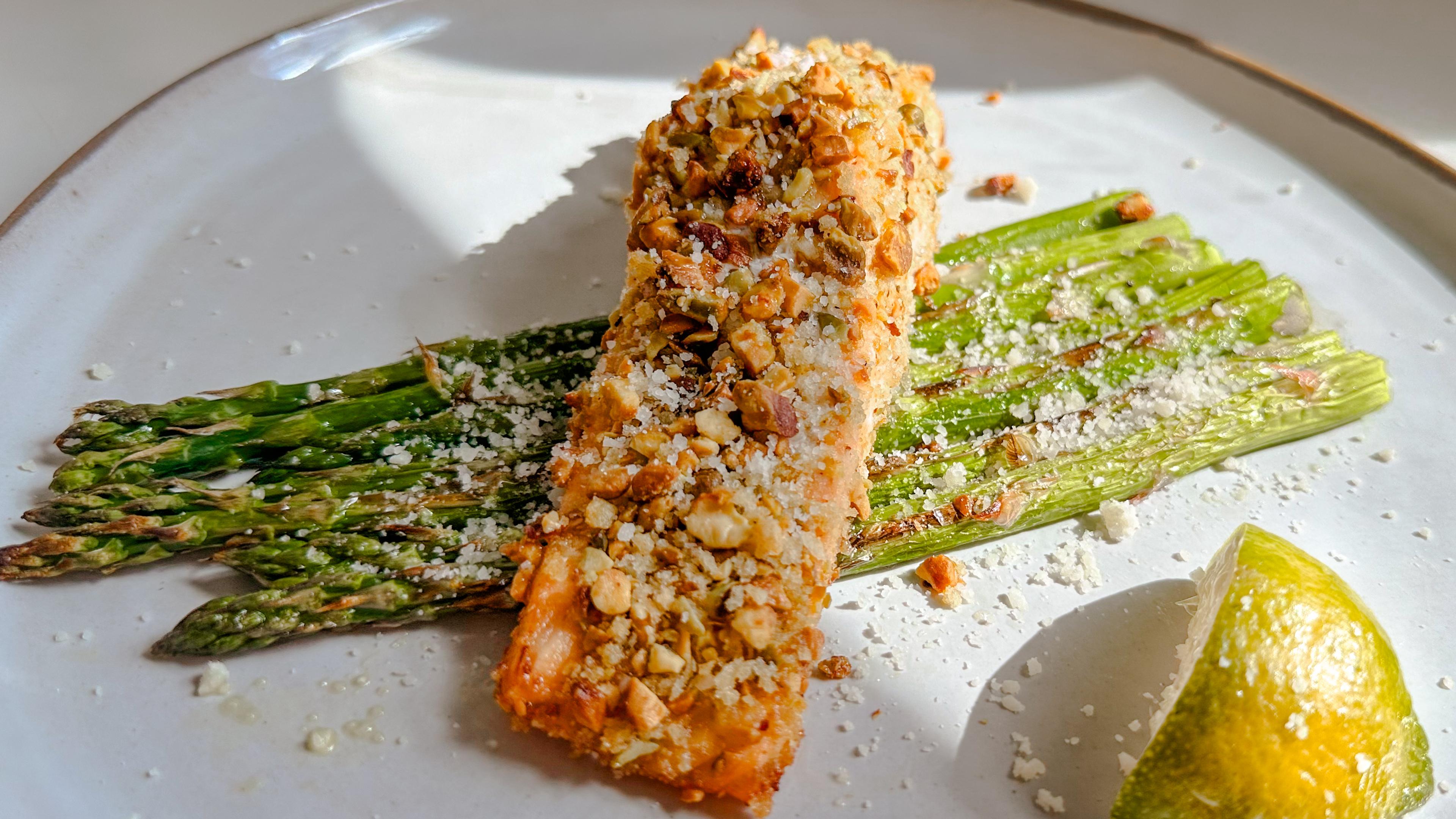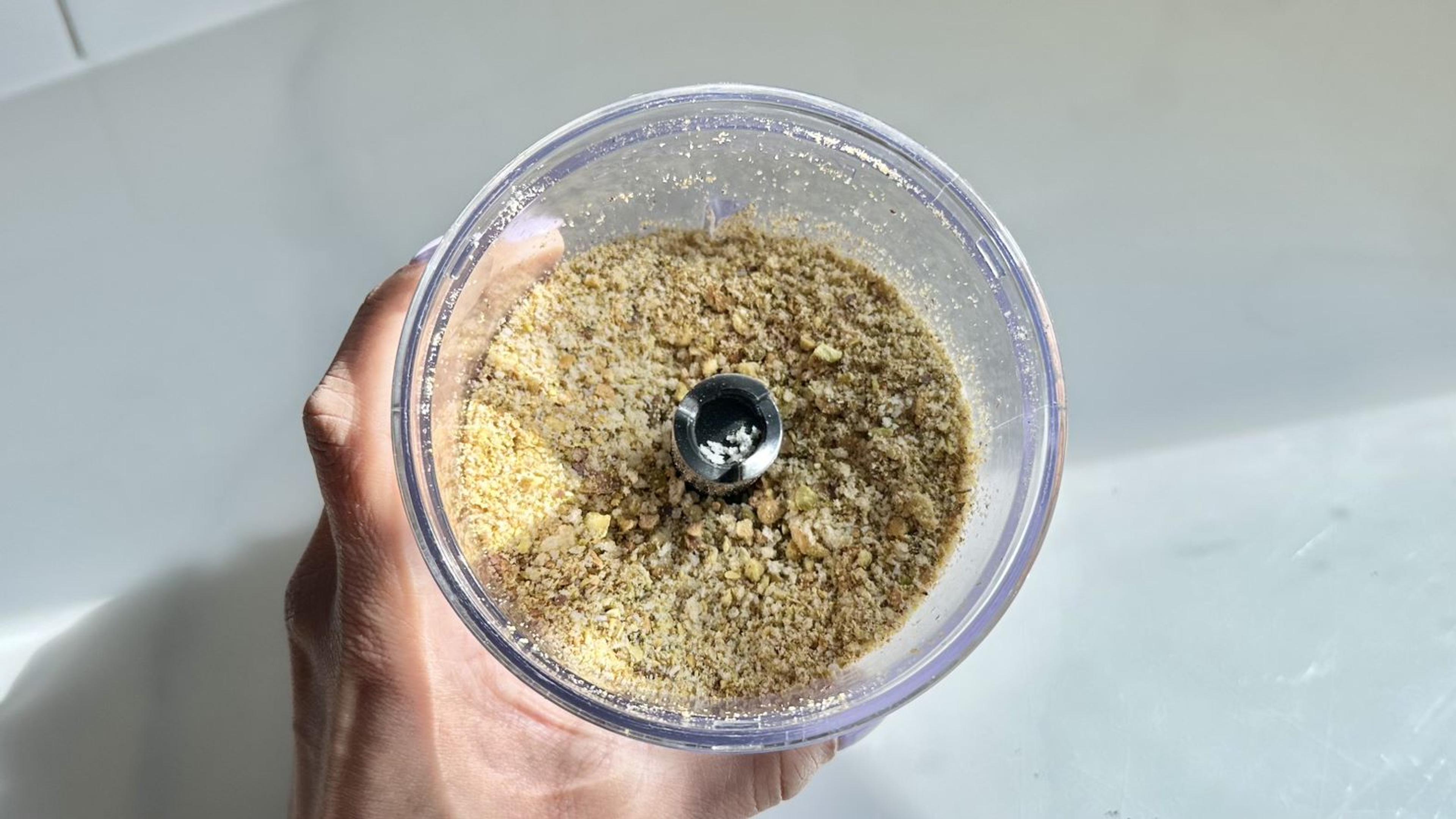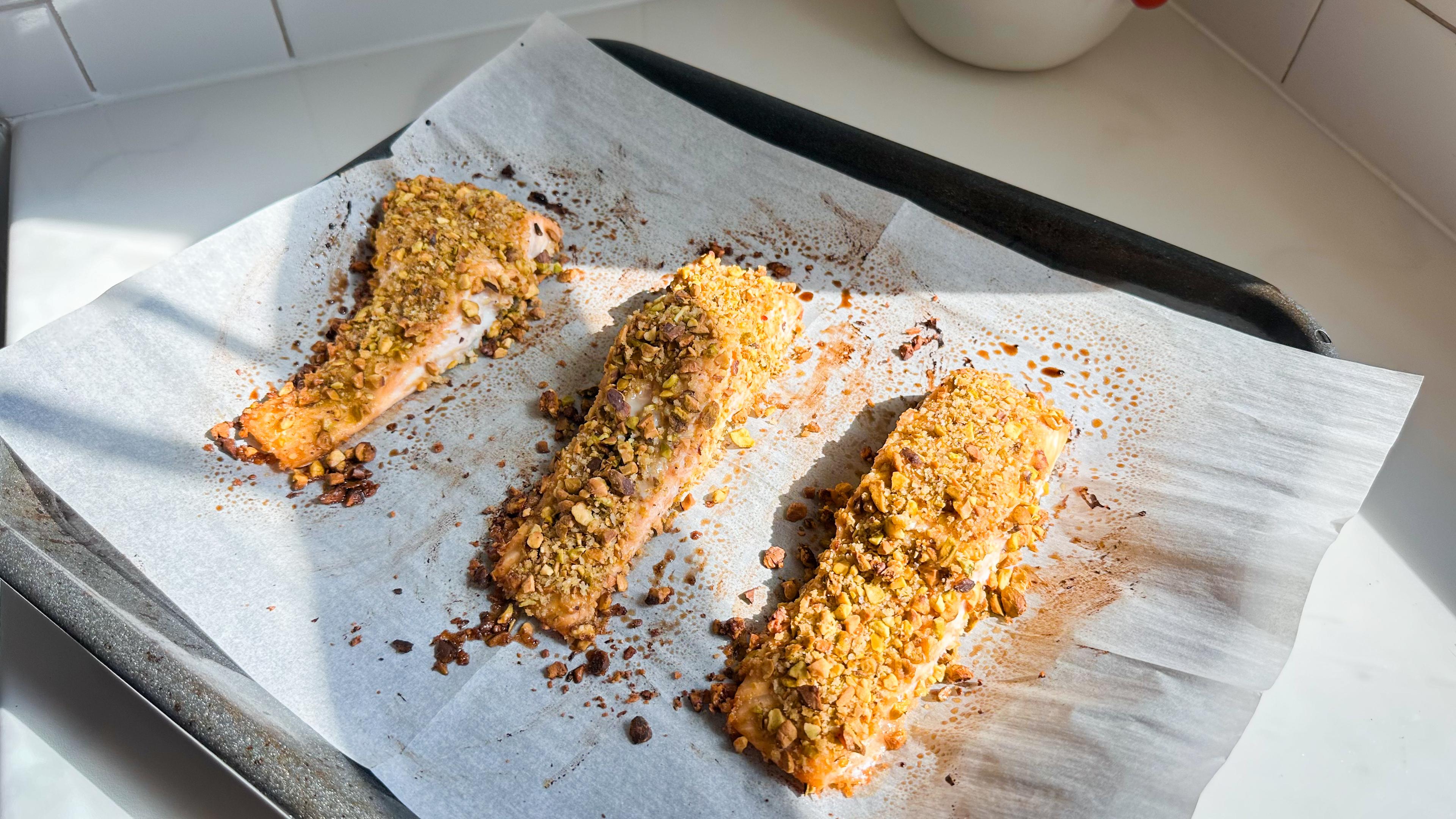Pistachio Crusted Salmon with Roasted Asparagus

| 1 min read

Total Time:
30 minutes
Prep Time:
10 minutes
Cooking Difficulty:
Easy
Serving Amount
Ingredients
4 salmon filets
1 Tbsp. honey
11⁄2 Tbsp. Dijon mustard
salt and pepper to taste
1⁄3 cup breadcrumbs
1⁄2 cup pistachios
1 spray olive oil
1 bunch asparagus, trimmed
2 Tbsp. olive oil
1 lemon, wedged
1⁄4 cup grated parmesan
Instructions
Step 1
Preheat oven to 400 degrees F. Prepare a lined baking sheet with foil. The asparagus will roast under the broiler and parchment paper will burn.

Step 2
In a small bowl, combine Dijon mustard, honey, salt and pepper to taste and whisk.

Step 3
Brush the salmon with the mustard and honey mixture.

Step 4
In a food processor, combine panko breadcrumbs, pistachios, and salt and pepper. If you do not have a food processor, finely chop the pistachios and combine with breadcrumbs.

Step 5
Pour over the pistachio mixture over the salmon, pressing down to allow it to stick. Place on a lined baking sheet.

Step 6
Spray the coated salmon filets with olive oil, then bake for 12-16 minutes, or until desired internal temperature. I usually like 125 degrees F. Thicker salmon filets need to cook toward the longer end of the range. When salmon is cooked, move to a plate and allow to rest on the counter.

Step 7
Turn the broiler on high. Toss Asparagus in olive oil, salt and pepper. Do not add lemon juice as it will taste best fresh after roasting. Place on the baking sheet. Roast under top broiler for 5-7 minutes depending on the thickness of the asparagus. Very thin asparagus will only need about 5 minutes. The asparagus should have a nice brown color on top with a few charred bits.

Step 8
Serve salmon with asparagus on a plate. Top with lemon juice and grated parmesan.





